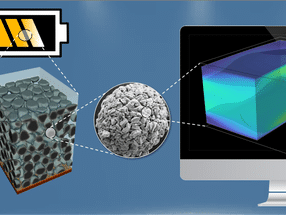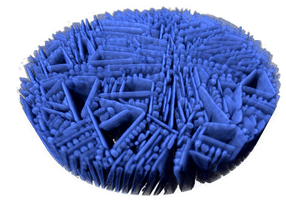Cambridge Display Technology and Dow Reach Agreement on Light-Emitting Polymer Technology
The Dow Chemical Company (Midland, Mich.) and Cambridge Display Technology (CDT, Cambridge, U.K.) have reached an agreement licensing CDT's polyfluorene light-emitting polymer (LEP) technology to Dow.
Dow and CDT had been working separately to develop polymers for use in LEP displays, which are Organic Light-Emitting Displays (OLEDs). The agreement, which is only for material intellectual property (IP), provides Dow access to CDT's IP to polyfluorene-based LEPs and establishes guidelines for future development between the companies.
The combined expertise of Dow and CDT is expected to greatly accelerate the development of LEP displays. CDT will make available to Dow all of its intellectual assets related to polyfluorenes, as well as its process and scale-up knowledge. Dow will focus on LEP materials development, performance and scale manufacturing, while CDT pursues further development and licensing of its technology for LEP displays. As Dow improves its current LEP materials and develops new products, CDT will test the materials in both its Cambridge labs and its pilot technology development facility being constructed in nearby Godmanchester, U.K.
OLED displays are expected to be deployed in instrument panels and portable electronics such as mobile phones and personal digital assistants, and eventually larger displays for personal computers and consumer products, where they could overtake liquid-crystal display (LCD) technology in the future. Several CDT licensees for device patents have announced commercialization of LEP displays in late 2001 and others have announced the intention of doing so in 2002.
As an emissive display, LEPs need no backlight, which means they can be thinner and lighter than LCDs, as well as more power-efficient. LEP displays are also brighter with richer color, offering sharp, high-contrast images that can easily be viewed from acute angles. Additionally, LEPs in liquid form are unique in that they can be ink-jet printed on glass and plastic, which is a technology advantage that could significantly change the way displays are produced and open new markets and opportunities.
"CDT is committed to enabling the LEP display industry and its licensees by helping to ensure that the contributing technologies meet their needs. LEP material availability is critical to this strategy," said Dr. David Fyfe, Chief Executive Officer of CDT. "CDT has worked in parallel with Dow in the development of the polyfluorene family of LEPs and believes that a collaborative relationship with Dow is the best way for the industry to get more efficient and longer lifetime polyfluorene LEPs. We are confident in Dow's commitment to be a reliable and innovative supplier of LEP materials and look forward to working with them."
"Dow lends to the collaboration its in-depth expertise in material science and polymer development and manufacturing," said Robert Spurling, Business Director of the Display Technologies group of Dow Advanced Electronic Materials. "Dow was the first company to make a polyfluorene LEP material with high molecular weight and purity, which increases display lifetime and allows for 'color tuning' to create a greater variety of colors. This material knowledge is an important advantage in our efforts with CDT to bring next-generation displays into reality."
Dow is on target to commercialize materials for fabrication of full-color displays in 2002. Dow announced the commercial availability of its green LEP in October 2000 and plans to launch red materials by year-end and blue materials in the next nine months.
As part of the deal between CDT and Dow, CDT has made available the polyflourene blue LEP it has developed available to Dow for further development.
Most read news
Topics
Organizations
Other news from the department science

Get the chemical industry in your inbox
From now on, don't miss a thing: Our newsletter for the chemical industry, analytics, lab technology and process engineering brings you up to date every Tuesday and Thursday. The latest industry news, product highlights and innovations - compact and easy to understand in your inbox. Researched by us so you don't have to.


























































